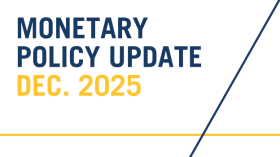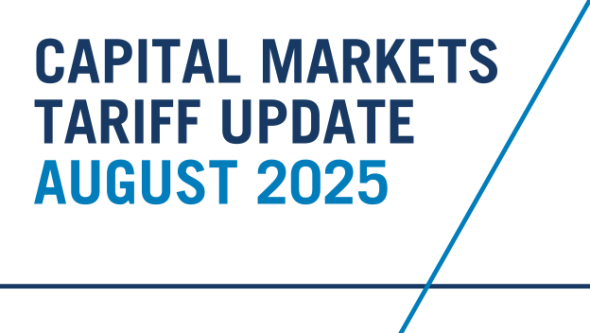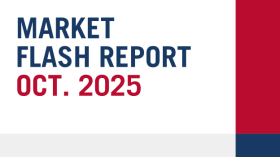
Capital Markets | Tariff Update August 2025

Market Update
What has happened in the markets?
As trade deals rolled in and the economic data remained largely resilient, the market continued to grind higher through the end of July. August started with a selloff as many of the new tariffs went into effect, but the S&P 500 remains within striking distance of all-time highs of late and is up about 7% on the year thus far. Earnings reports continue to be mostly positive, although some companies are guiding with caution as the ramifications of trade deals on the price of doing business is still not crystal clear. Historically, the late summer months (August and September) tend to be a seasonally weak time for the market as trading volume slows. We’ll see if this year proves different and the rally sustains or if the market digests some of its gains from the past three months.
The Federal Reserve once again held the Fed Funds Rate steady at 4.25-4.50% at the most recent FOMC meeting on July 30, citing low unemployment and solid labor market conditions. The latest PCE inflation numbers came in slightly hotter than expected and increased from the month prior, confirming the Fed’s reasoning to remain cautious when it comes to rate cuts. After a turbulent start to the year for interest rates, conditions have recently stabilized, with the 10-year Treasury Yield currently settling around 4.2%.
What is the latest update on tariffs?
Over the past month, a number of trade deals have been announced, providing more clarity and stability for the market and its participants. While the details of many of the trade deals are still being finalized, much of the baseline frameworks have been established, with many new tariff rates having gone into effect on August 1. The removal of potential headwinds from a drawn out trade war has helped to significantly reduce volatility.
The US-EU preliminary trade deal announced a 15% baseline tariff on most goods from Europe, which was below the threatened 30%. Select goods are exempt from tariffs entirely. Also part of the agreement, the EU pledges to invest $600 billion in the US through 2028 and purchase $750 billion worth of US energy exports over the next several years, increasing its demand for American oil, natural gas and nuclear fuel. With many specifics still unanswered, the EU announced a six-month pause on its tariffs of US goods in a gesture of goodwill to promote continued dialogue and cooperation with the Trump administration as they work towards finalizing the deal.
Similarly, trade deals with South Korea and Japan set imports on goods into the US at 15% (down from the originally announced 25%). Both countries also committed to significantly increasing US energy purchases and investment into US-controlled ventures to bolster supply chains in sectors including semiconductors, pharmaceuticals, shipbuilding, AI, energy and automobiles.
Deals are aiming for expanded market access of US companies into foreign countries, in some cases duty-free, while leaving steel, aluminum and copper tariffs on imports into the US at 50% in an effort to protect and build the US metals industry.
Elsewhere, trade talks between other nations are progressing at various levels. Mexico received another 90-day extension, while Trump upped tariffs on Canada from 25% to 35%. Negotiations with India and Brazil have taken a more hostile tone. Trump placed a 25% tariff on India while threatening additional “penalties” and a 50% total tariff on Brazil, citing policies that the administration disagrees with.
Trade discussions with China continue with the likelihood that the tariff pause will be extended another 90 days as both countries continue to negotiate a deal. Of note however, the US has agreed to open the Chinese market back up to purchasing high-powered semiconductor chips and, in return for commitments from China, to loosen controls on rare earth exports to the US. Tariffs on imports to both countries have dropped significantly, with the US rate falling to 55% from 145% and China lowering to 10% from 125%. The market has been actively pricing in a trade deal agreement between the two countries as tensions have de-escalated, so any finalization of an agreement may have limited impact on markets.
What is the impact of policy on the economic outlook?
GDP growth snapped back in the second quarter, growing at 3% and exceeding expectations of 2.3%. This can primarily be attributed to strong consumer spending, which rose by 1.4%, and a large dropoff in imports, which fell by over 30% compared to the first quarter, when companies were attempting to front-run tariffs. Even with the strong second quarter print, economic growth was seen as moderating in the first half of the year and is expected to continue for the remainder of 2025.
Over the past few months, US policy on the trade front has become more clear and while overall tariff rates will likely settle much higher than they were at the start of the year, they are lower than originally feared. Thus far, tariffs have had little impact on aggregate consumer spending and overall inflation, but this may change as tariffs begin to go into effect. Core PCE, the Fed’s preferred inflation metric, has ticked higher of late and remains stubbornly above the Fed’s 2% target.
Labor market conditions have remained solid and unemployment remains manageable at 4.2%. While immigration reform is likely to negatively impact labor supply in certain industries — particularly agriculture, hospitality and construction — a broad-based labor shortage is not expected, and median unemployment expectations for 2026 sit near current levels.
The resilient economy continues to support consumer sentiment, which grew to a five-month high in July. Investors have become much less fearful over the state of the US economy. However, the level of uncertainty about the economic outlook and inflation remains elevated as there is a strong belief that the tariffs will eventually make their way through to consumer prices.
The combination of all of these factors has kept the Fed from taking any action to lower interest rates. The Fed continues its “wait and see” approach as Chairman Powell has continued to express concerns over possible stagflation — slowing economic growth and rising inflation. The committee will have two months of inflation readings to assess how the tariffs are rolling through to the hard data before announcing a decision on September 18.
We will continue to update you as facts and circumstances change.

